- Home
- Stephen Crane
Maggie, a Girl of the Streets and Other New York Writings
Maggie, a Girl of the Streets and Other New York Writings Read online
2001 Modern Library Paperback Edition
Biographical note copyright © 2001 by Random House, Inc.
Introduction copyright © 2001 by Luc Sante
All rights reserved under International and Pan-American
Copyright Conventions. Published in the United States by Modern Library, an imprint of The Random House Publishing Group, a division of Random House, Inc., New York, and simultaneously in Canada by Random House of Canada Limited, Toronto.
MODERN LIBRARY and the TORCHBEARER Design are registered trademarks of Random House, Inc.
Grateful acknowledgment is made to the University Press of Virginia for permission to reprint approximately 90 pages from “New York Journalism” in Volume VIII of The Works of Stephen Crane, edited by Fredson Bowers (Charlottesville, Virginia: University Press of Virginia, 1973). Copyright © 1973 by the Rectors and Visitors of the University of Virginia. Reprinted with permission of the University Press of Virginia.
Library of Congress Cataloging-in-Publication Data
Crane, Stephen.
Maggie, a girl of the streets, and other New York writings / Stephen Crane.
p. cm.
eISBN: 978-0-307-76973-2
1. New York (N.Y.)—Social life and customs—Fiction. 2. City and town life— Fiction. 3. Slums—Fiction. 4. Poor—Fiction. I. Title.
PS1449.C85 A6 2001 813′.4—dc21 00-048726
Modern Library website address: www.modernlibrary.com
v3.1
STEPHEN CRANE
Stephen Townley Crane, the iconoclastic novelist, poet, short-story writer, journalist, and war correspondent who propelled American literature into the modernist age, was born in Newark, New Jersey, on November 1, 1871. The origins of his genius will perhaps always remain elusive: he was of the opinion that “writing was a business like any other” and believed that “one could train one’s mind to observe and a man should be able to say something worthwhile about any event.” Crane’s tragically abbreviated career, which spanned less than ten years, dates from 1892, when the New York Tribune printed the novice reporter’s so-called Sullivan County sketches, a series of rustic stories set in the New York countryside. His first novel, Maggie, A Girl of the Streets, was privately printed in 1893 and broke new ground with its realistic portrait of life in the slums of New York City. The Black Riders, a volume of poetry, came out in 1895.
Crane’s next book, The Red Badge of Courage, brought him international fame when it was published in October 1895. “The Red Badge of Courage has long been considered the first great ‘modern’ novel of war by an American—the first novel of literary distinction to present war without heroics and this in a spirit of total irony and skepticism,” wrote Alfred Kazin. “What makes [it] so remarkable, and a pioneer in the literature of war, is that it was written entirely from instinct by a young newspaperman in his early twenties who had never seen a war.”
“With The Red Badge of Courage, Crane burst upon the American public with the effect of a Civil War projectile lain dormant beneath a city square for thirty years,” observed Ralph Ellison. “That The Red Badge was widely read during Crane’s own time was a triumph of his art.”
Afterward Crane led a vagabond existence as a journalist and war correspondent while continuing to write fiction. Capitalizing on the success of The Red Badge of Courage, he turned out The Little Regiment (1896), a collection of Civil War stories. In addition he completed two more novels: George’s Mother (1896), a second Bowery tale often viewed as a companion volume to Maggie, and The Third Violet (1897), a portrait of bohemian life that is generally considered his least accomplished work. Crane’s earlier travels in Mexico and the American Southwest inspired two of his most famous short stories, “The Bride Comes to Yellow Sky” (1897) and “The Blue Hotel” (1898). His harrowing misadventures at sea en route to Cuba resulted in “The Open Boat” (1897), a story many critics regard as his masterpiece. In 1899, the final year of his life, Crane published War Is Kind, a second book of verse; Active Service, an adventure-romance based on his experiences as a reporter in the Greco-Turkish War; and The Monster and Other Stories, whose disturbing title story provides a sharp study of community malice.
Stephen Crane suffered a series of tubercular hemorrhages while living in England during the spring of 1900 and died in a sanatorium in Badenweiler, Germany, on June 5, 1900. Several of Crane’s last works were issued posthumously, including Whilomville Stories (1900), a volume of tales about small-town America; Wounds in the Rain (1900), a collection of short stories drawn from his exploits in the Spanish-American War; Great Battles of the World (1901), a work of nonfiction culled from a popular magazine series; Last Words (1902), a miscellany of articles, stories, and newspaper sketches; and The O’Ruddy (1903), a swashbuckling Irish romance left unfinished at the time of his death.
“Crane in his short life quickly showed himself the most original, most ruthlessly independent, most sardonic novelist of his talented generation,” judged Alfred Kazin. “Nowhere in American writing was a godless world expressed with so much terseness and finality as in the work of Stephen Crane.” The poet John Berryman, one of Crane’s most celebrated biographers, concluded: “Crane was perhaps as original as an artist can be, and be valuable.… By a margin he is probably the greatest American story-writer, he stands as an artist not far below Hawthorne and James, he is one of our few poets, and one of the few manifest geniuses the country has produced.”
CONTENTS
Cover
Title Page
Copyright
BIOGRAPHICAL NOTE
INTRODUCTION BY LUC SANTE
MAGGIE, A GIRL OF THE STREETS
Chapter I
Chapter II
Chapter III
Chapter IV
Chapter V
Chapter VI
Chapter VII
Chapter VII
Chapter IX
Chapter X
Chapter XI
Chapter XII
Chapter XIII
Chapter XIV
Chapter XV
Chapter XVI
Chapter XVII
Chapter XVII
Chapter XIX
GEORGE’S MOTHER
Chapter I
Chapter II
Chapter III
Chapter IV
Chapter V
Chapter VI
Chapter VII
Chapter VIII
Chapter IX
Chapter X
Chapter XI
Chapter XII
Chapter XIII
Chapter XIV
Chapter XV
Chapter XVI
Chapter XVII
NEW YORK TALES AND SKETCHES
A Great Mistake
An Ominous Baby
A Dark-Brown Dog
The Broken-Down Van
An Experiment in Misery
An Experiment in Luxury
Mr. Binks’ Day Off
Stories Told by an Artist
The Men in the Storm
Coney Island’s Failing Days
The Fire
When Man Falls, a Crowd Gathers
New York’s Bicycle Speedway
An Eloquence of Grief
In the Tenderloin: A Duel Between an Alarm Clock and a Suicidal Purpose
The “Tenderloin” As It Really Is
In the “Tenderloin”
Stephen Crane in Minetta Lane
Adventures of a Novelist
NOTE ON THE TEXT
COMMENTARY
READING GROUP GUIDE
INTRODUCTION
Luc Sante
Stephen Crane managed somehow or other to obtain for himself the special condensed edition of life. He was not long past his twentieth birthday when he wrote the first draft of Maggie—“in two days before Christmas,” he claimed. He self-published it (under the pseudonym of Johnson Smith) not long after he turned twenty-one. George’s Mother and two thirds of the stories in this book, as well as The Red Badge of Courage, were written the following year, before he had attained twenty-three. Thereafter, he wrote two more short novels (and began several others), wrote numerous short stories and pieces of reportage, traveled in the West and down to Mexico, covered the Spanish-American War and the Greco-Turkish War for Pulitzer and Hearst, moved to a baronial manor in England, and came down with tuberculosis, which killed him when he was twenty-eight. It may have been a short life, but it was a full one, conducted at three or four times the normal speed.
Prior to Maggie, he hardly had an apprenticeship: a handful of sketches at most. He had thrown over higher education after a semester apiece at two institutions. He was an orphan, his mother having just died and his father when he was eight. He lived variously: with brothers in New Jersey and in Sullivan County, New York, and in New York City in sundry ad hoc arrangements with artists his age, most often so poor they burned furniture for fuel and ate randomly. He zipped back and forth among domiciles, not seeming to spend more than two consecutive weeks in any one spot. The material for Maggie was undoubtedly drawn in part from his experiences of people from childhood onward, but the aspects specific to New York City he had absorbed in a matter of no more than three months before writing the first draft, since he arrived in the city in September and wrote the thing in December. He was a kid. His last years were studded with names; people like Joseph Conrad and Henry James were friends and neighbors. At the time of Maggie, however, he was a strange, impulsive, prodigious adolescent, half-silent and half-wild. The old men who published their memories of him in the 1930s or talked to his first biographer, Thomas Beer, in the previous decade remembered him in kid terms. One man, for example, recalled reading Maggie chapter by chapter “in a house over on the far East Side, where he lived with a crowd of irresponsibles.” Translate this to the contemporary equivalent of your choice.
Being a kid gave him a number of advantages of stance. He could presume, for one thing, to understand the hearts of matters he had barely glimpsed—and this aspect looms largest in the clairvoyance of The Red Badge of Courage, which many war veterans were certain had to have been written by another war veteran. He could also overlook decorum, or, maybe, be innocent of it altogether. In the early 1890s, Realism was a sort of continental pornography; Zola was bought, more or less under the counter, by thrill-seeking schoolboys (not Crane, though, who didn’t much like Zola). A homegrown Realism, employing the American slums as its focus and subject, simply didn’t exist. The slums themselves were only just beginning to be discussed in a serious way, and then by reformers and crusaders—Jacob Riis’s How the Other Half Lives had just come out, in 1890. Everything else lay in the future. The popular novelist Edward Townsend (Chimmie Fadden and A Daughter of the Tenements, both 1895), a friend of Crane’s, virtually made a career of elaborating and sentimentalizing aspects of Maggie. Riis’s fiction appears like so many banalizations of the “baby” tales herein, although there is no evidence he ever read Crane. Almost anything else of literary significance written about the Bowery and the Lower East Side, by Hutchins Hapgood, Rupert Hughes, James Huneker, Alfred Henry Lewis, even O. Henry, was published after 1900, after Crane’s death.
It’s not, of course, as if the New York slums lay beneath notice. Harper’s and the other illustrated papers regularly sent reporters and sketch artists to do local-color items. The Police Gazette, which treated the Bowery as its private turf and made minor stars of its more notable loungers, was standard-issue reading in every barbershop in the country. The local accent and mannerisms were familiar nationwide from being relentlessly reproduced for laughs on the vaudeville stage. (Thomas Beer: “The Bowery language was humorous, as are a dozen dialects in which the fierce, defensive cynicism of the illiterate American takes on color and shape. There was a choppy rhythm in the speech from which the sound of th had been taken away. Many vowels were washed over so briskly that it took experience to tell whether they had been pronounced at all by some hasty group of lads hanging for a breath together while the policeman’s back was turned.”) All these avenues, however, fell below the level of art, which at the time was still supposed not only to be refined, but to concern itself exclusively with refined subjects. William Dean Howells, who was to champion Crane just as he championed nearly every worthwhile American writer of the era, had a character in A Hazard of New Fortunes (1890) wonder why it was that painters could see the beauty of a bustling slum thoroughfare if they happened upon it in Naples but overlook the same thing in New York, and Crane himself thought of genre painting (“Street Scene in Cairo”) among the alleys of Coney Island. But such depictions would have to wait for the twentieth century and the Ashcan School.
The Lower East Side, then, before the great waves of immigration from Eastern Europe and Italy, was still largely Irish in ancestry and nurtured a lumpenproletarian style and customs in dissolution and vassalage that had been refined over a century. Most inhabitants weren’t recent immigrants struggling to adjust, but treadmill-bound victims of compounded hopelessness and inertia. They might live in the same dumps and drink in the same deadfalls as their parents or grandparents before them. The Bowery, meanwhile, was the great clearinghouse that drew from all over the country thrill-seekers, lamsters, tramps, barflies, outcasts, predators, margin-players, smalltime showbiz personalities, people with unconventional or unmarketable ambitions, people who knew nothing except how to hang out. The two spheres were distinct, although they blurred together in the popular mind. They were downtown, they were poor and vicious and uncultured and base, and that was all most people needed to know.
Soon after arriving, Crane thought the Bowery was “the only interesting place in New York,” and a difference of opinion on the subject busted up one of his earliest serious romances. As the youngest son of a financially uncertain clerical family, he could not be said to be slumming, exactly, and he doesn’t really seem like one of those writer types who go places merely to prospect for material. Rather, Crane throughout his life was interested in things that puzzled him, things that were off-kilter in human terms. He had to throw himself into the Bowery in order to dope it out, in the phrase of the time. After he had done so, he commented regarding “An Experiment in Misery” that “the root of Bowery life is a sort of cowardice. Perhaps I mean a lack of ambition or to willingly be knocked flat and accept the licking.” This should not be interpreted as contempt, but it did settle the matter for him.
The Lower East Side posed a different sort of problem. Maggie is a study in tragic inevitability—Howells called it “Greek”—and that sort of thing was to go on fascinating him. It is also romantic, as John Berryman points out in his book on Crane. Maggie herself is fitted out for a kind of sainthood (even as her martyrdom seems to anticipate the judgment levied upon her opposite, Frank Wedekind’s Lulu, who meets Jack the Ripper). Crane treated the Bowery sociologically, and Maggie may have begun as an inquiry along those lines, but Crane was pulled by tides of emotion toward the specific and the archetypal. In any case, it didn’t go over with the wider public. Although copies got to Howells and Hamlin Garland and a few other writers who immediately understood, the original pseudonymous edition sold exactly two copies in the only bookstore that would handle it. After the triumph of The Red Badge of Courage, critics started to notice it, but they still didn’t like it much. It was raw, uncouth, red (to employ Crane’s favorite adjective). It was perceived as obscene, or close to it, and in 1896 Crane actually abetted a bowdlerized edition (which also incorporated his own revisions) that tamed the interjections and drew a discreet veil over the circumstances of Maggie’s end. For half a century Maggie stoo
d among the unknown American classics.
A few of the stories herein are stories, at least one of them (“A Dark Brown Dog”) an anthology standard, and deservedly so. The rest are examples of what Crane thought of as reporting. Crane spent much of his brief writing life in the employ of newspapers and magazines, but such employments often ended unhappily. Thomas Beer again: “He could not report. Apparently he did not even try to report. Of what use to any newspaper was an impression of impatient horses kicking ‘grey ice of the gutter into silvery angles that hurtled and clicked on frozen stone’ when the boy had been sent to get the facts of a large and important fire?” Newspapers then had a lot more room for impressions, fancies, and word-pictures than they do today, but even so there were limits, which Crane habitually overstepped. You’d be hard pressed to find a single ephemeral fact or number in any of his pieces. He was hardly ignorant of what was required, but he couldn’t help himself. For him, writing meant noticing certain kinds of marginal details that cut openings through to the emotional center of his subject, and language was a color wheel. It is always embarrassing to get mystical about literature, but there is little question that Crane was a votary, a practitioner of some witchcraft that defied calculation and often conventional better judgment. As he himself put it, memorably, “An artist, I think, is nothing but a powerful memory that can move itself at will through certain experiences sideways and every artist must be in some things powerless as a dead snake.”
—
LUC SANTE is the author of Low Life, Evidence, and The Factory of Facts. He teaches at Bard College and lives in New York.
BIBLIOGRAPHY
Thomas Beer, Stephen Crane. New York: Alfred A. Knopf, 1923.
John Berryman, Stephen Crane: A Critical Biography. New York: William Sloane Associates, 1950; revised edition New York: Meridian Books, 1962.
J. C. Levenson, editor, Stephen Crane: Prose and Poetry. New York: The Library of America, 1984.
MAGGIE,
A GIRL OF THE STREETS

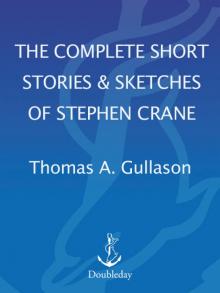 The Complete Short Stories and Sketches of Stephen Crane
The Complete Short Stories and Sketches of Stephen Crane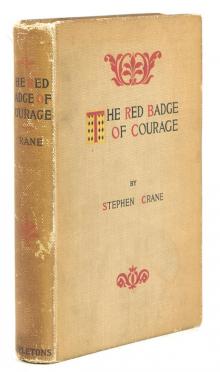 The Red Badge of Courage: An Episode of the American Civil War
The Red Badge of Courage: An Episode of the American Civil War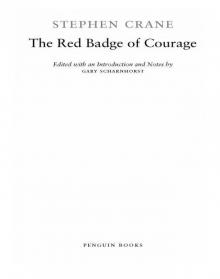 The Red Badge of Courage
The Red Badge of Courage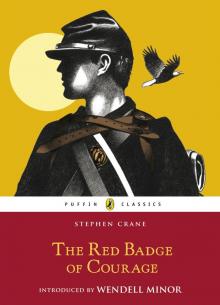 The Red Badge of Courage by Stephen Crane
The Red Badge of Courage by Stephen Crane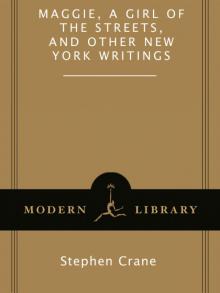 Maggie, a Girl of the Streets and Other New York Writings
Maggie, a Girl of the Streets and Other New York Writings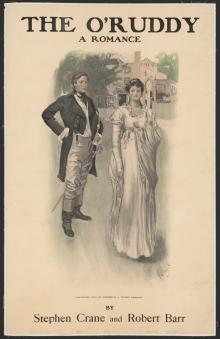 The O'Ruddy: A Romance
The O'Ruddy: A Romance The Third Violet
The Third Violet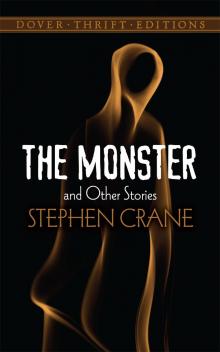 The Monster and Other Stories
The Monster and Other Stories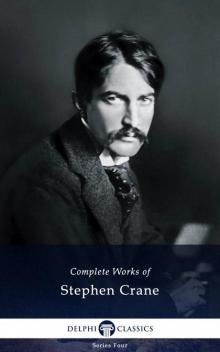 Complete Works of Stephen Crane
Complete Works of Stephen Crane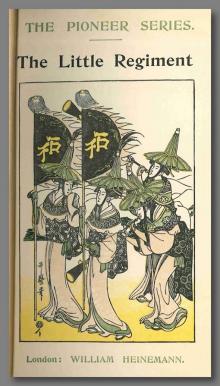 The Little Regiment, and Other Episodes of the American Civil War
The Little Regiment, and Other Episodes of the American Civil War The Red Badge of Courage and Other Stories
The Red Badge of Courage and Other Stories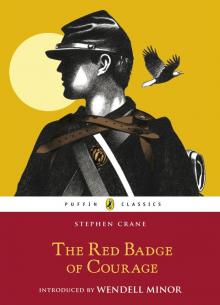 Red Badge of Courage (Puffin Classics Relaunch)
Red Badge of Courage (Puffin Classics Relaunch)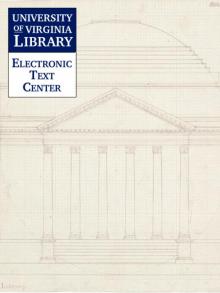 The Fight: Whilomville Stories: XI.
The Fight: Whilomville Stories: XI.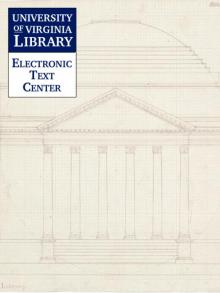 A Man and Some Others.
A Man and Some Others.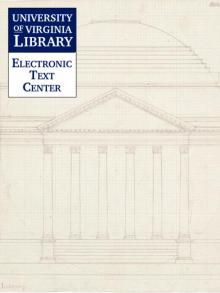 The Monster
The Monster